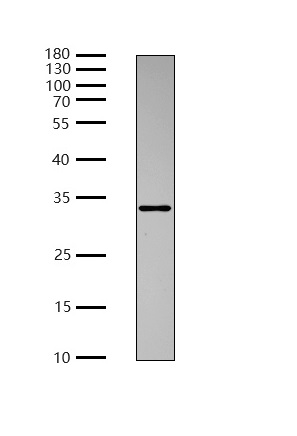OTX2 antibody
Catalog Number:PP1259
- 产品信息
- 相关图片
- 常见问题
|
Basic infomation |
source |
Mouse |
|
Clonality |
Polyclonal |
|
|
Isotype |
IgG |
|
|
Reactivity |
H M R |
|
|
MW (kDa) |
32kDa |
|
|
Purification |
Antigen affinity purfication |
|
|
UniProt ID |
P32243 |
|
|
NCBI Gene |
5015 |
|
|
|
|
|
|
Applications |
Tested Applications |
WB, |
|
Cited Applications |
WB, IHC, IF |
|
|
Product Usage Information |
Western Blotting |
1:500-1:2000 |
|
Immunohistochemistry |
1:200-1:400 |
|
|
Immunofluorescence |
1:200-1:400 |
|
|
|
|
|
|
Storage |
PBS with 50% glycerol and less than 0.02% sodium azide |
|
|
Store at –20°C, stable for one year after shipment |
||
|
Do not aliquot the antibody |
||
|
|
||
|
Background |
This gene encodes a member of the bicoid subfamily of homeodomain-containing transcription factors. The encoded protein acts as a transcription factor and plays a role in brain, craniofacial, and sensory organ development. The encoded protein also influences the proliferation and differentiation of dopaminergic neuronal progenitor cells during mitosis. Mutations in this gene cause syndromic microphthalmia 5 (MCOPS5) and combined pituitary hormone deficiency 6 (CPHD6). This gene is also suspected of having an oncogenic role in medulloblastoma. Alternative splicing results in multiple transcript variants encoding distinct isoforms. Pseudogenes of this gene are known to exist on chromosomes two and nine. |
|
|
|
|
|
|
Abbreviation |
H: human M: mouse R: rat Rb: rabbit Hm: hamster Mk: monkey Vir: virus C: chicken Z: zebrafish Dg: dog Pg: pig Hr: horse |
|



 返回列表
返回列表